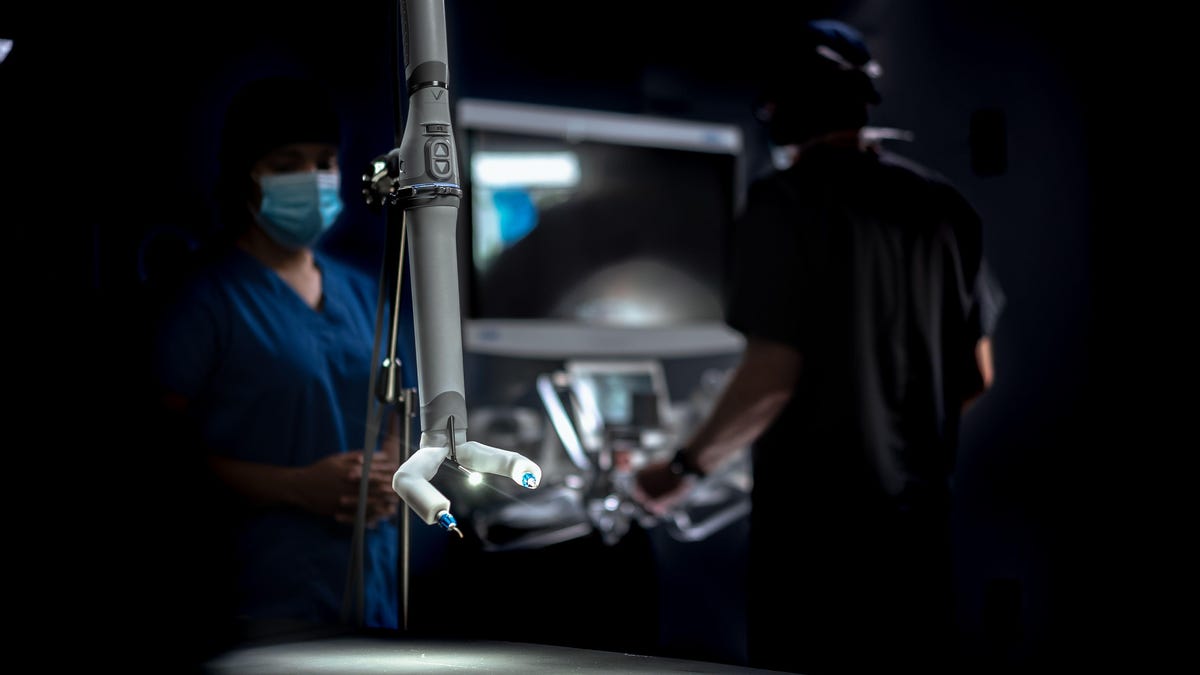Remote Surgical Robot Could Join Astronauts on Future Mars Missions
Star Trek health care continues to infiltrate the ISS.

An image of Virtual Incision's MIRA robot, which is set to head to space in 2024.
No matter how mentally and physically prepared they are, future astronauts bound for deep space can't escape their mortal restrictions. At some point during their long and isolated journeys, these pioneers might need medical care. But that's tough. In space, there are no hospitals.
Enter MIRA.
On Tuesday, scientists from the University of Nebraska-Lincoln said their invention of a small surgical robot -- called the miniaturized in vivo robotic assistant, or MIRA -- will board the International Space Station for zero-gravity testing in 2024. Ultimately, the team's hope is for MIRA to accompany astronauts as they fly toward Mars and zoom through the untouched outer reaches of space.
"As people go further and deeper into space, they might need to do surgery someday. We're working toward that goal," Shane Farritor said in a statement. Farritor is a professor of engineering at the University of Nebraska-Lincoln and co-founder of Virtual Incision, the company behind MIRA.
The 2-pound bot basically looks like a white rod with a duo of small armlike attachments on one end. These attachments are each adorned with two metal instruments. It's the product of nearly 20 years of development -- Virtual Incision has attained more than $100 million in venture capital investment since its genesis in 2006. To add to that, NASA recently awarded the University of Nebraska-Lincoln $100,000 to get the device ready for the 2024 journey.
A view of the International Space Station, where MIRA will hopefully live in a few years.
Already, according to a press release on the robotic surgeon, MIRA has helped with important procedures. Doctors have successfully used the instrument to perform minimally invasive colon resections, for instance, which involve removing part or all of a patient's colon.
If MIRA works well in space, a surgeon aboard the ISS could take advantage of the tech to help astronauts in need of medical assistance, without posing major risks to their bodies. MIRA could be especially important given the lack of personnel, time and tools on spacecraft.
Beyond that, the team says its technology could also allow ground-based surgeons to remotely work on a space-borne astronaut patient. As proof of principle, NASA astronaut Clayton Anderson took the robot's controls while situated at the Johnson Space Center in Houston and guided MIRA to perform surgerylike tasks in an operating room 900 miles away, at the University of Nebraska Medical Center. It worked.
This remote-control aspect of MIRA may also aid in surgeries closer to home one day -- an example the team gives is injured soldiers in the field who need advanced procedures calling for specialists stationed elsewhere. In fact, with that in mind, the US Army has also provided some funding for the MIRA project.
This is what MIRA attached to a patient bed might look like.
Come 2024, we'll have a better idea of how MIRA fares in intense situations.
If MIRA can survive the aggressive jostling that accompanies rocket launches, it'll reach the ISS and promptly be fit inside a space station experiment locker. Per the team, it'll probably be a year before astronauts conducting science experiments can put it into action. Then, once it's turned on, the robotic contraption will pretty much operate autonomously, Farritor said.
"The astronaut flips a switch, the process starts and the robot does its work by itself," he said. "Two hours later, the astronaut switches it off and it's done."
Recently, extraterrestrial surgery has become more talked about, given space agencies' goal of sending humans to other planets and coming up with new forms of transportation to access deep space. In April, NASA even "holoported" flight surgeon Dr. Josef Schmid onto the ISS as part of its endeavor to advance remote, cosmic medicine. Combined with MIRA, that mechanism suggests that one day life might truly be imitating Star Trek when it comes to health care.

